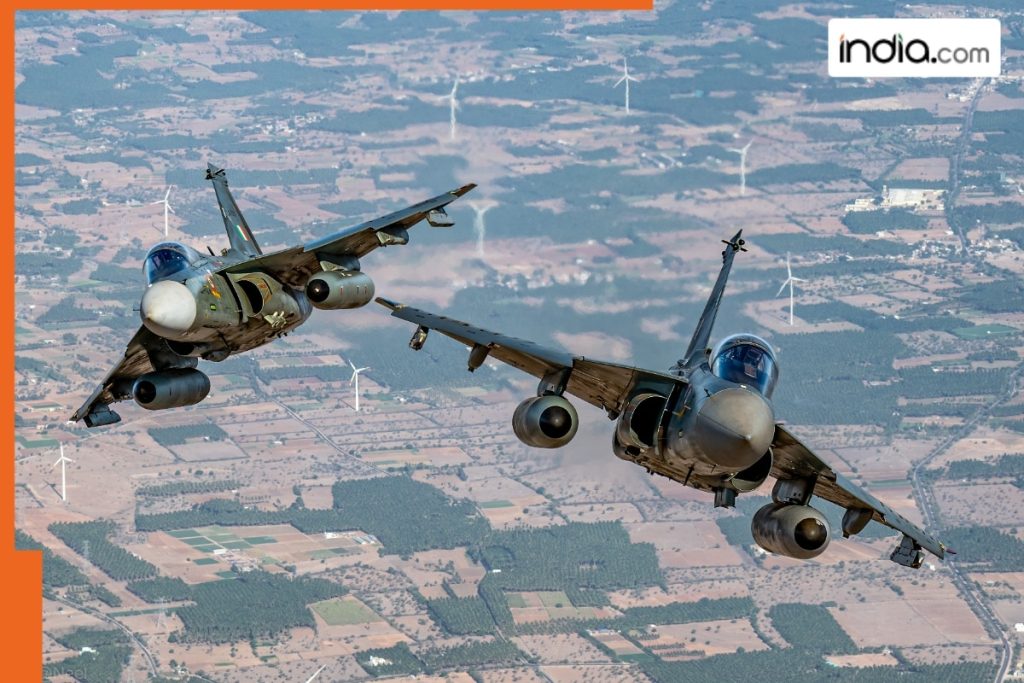HAL’s Tejas Program: A Response to Critics and a Vision for the Future of Indian Aerospace
In the bustling digital landscape of social media, opinions often outpace facts, and the recent discourse surrounding Hindustan Aeronautics Limited (HAL) and its Tejas Light Combat Aircraft (LCA) program is a prime example. A post on X (formerly Twitter), criticizing HAL’s production rate and comparing it unfavorably to Dassault Aviation’s Rafale deliveries, sparked a heated debate about the efficacy of India’s indigenous defense manufacturing efforts. While concerns about production timelines are valid, the criticism often overlooks the significant strides HAL has made in developing a complex fighter jet from scratch, fostering a domestic aerospace ecosystem, and paving the way for future advancements in Indian air power. This article delves into the nuances of the Tejas program, addressing the criticisms head-on, highlighting HAL’s achievements, and exploring the broader implications for India’s self-reliance in defense.
The Tejas program, conceived and developed by the Aeronautical Development Agency (ADA) with HAL as the manufacturer, represents a landmark achievement in India’s pursuit of indigenous defense capabilities. The LCA’s journey, from its first flight in 2001 to its induction into the Indian Air Force (IAF) in 2015, has been fraught with challenges, including delays in achieving operational clearances and initial production limitations. Comparing HAL’s output directly to Dassault’s established Rafale production line is a flawed analogy. Dassault benefits from decades of experience, mature production infrastructure, and a diversified international client base. HAL, on the other hand, has been tasked with building an entirely new fighter jet ecosystem within a nascent aerospace industry, navigating technological hurdles, supply chain complexities, and the intricacies of bureaucratic processes. The Tejas program is not merely about assembling aircraft; it involves developing critical technologies, nurturing a skilled workforce, and fostering a robust supply chain, thereby laying the foundation for future generations of indigenous combat aircraft.
HAL’s initial production capacity of eight Tejas aircraft per year was undeniably a constraint, attributed to the program’s early teething problems and delays in obtaining Initial Operational Clearance (IOC) and Final Operational Clearance (FOC). However, HAL has made significant progress in expanding its production infrastructure. With two assembly lines in Bengaluru and a third in Nashik, the company has tripled its annual production capacity to 24 Tejas Mk-1A jets. This expansion, coupled with streamlined supply chains and increased private sector participation, positions HAL to meet the IAF’s growing demand for the LCA. The company is on track to deliver the first Tejas Mk-1A by March 2025 and complete the order of 83 jets by 2028, ahead of schedule. This trajectory demonstrates HAL’s commitment to ramping up production and achieving a sustainable delivery rate comparable to established global manufacturers.
The IAF’s substantial orders for the Tejas are a testament to its confidence in the aircraft’s capabilities and HAL’s production roadmap. Beyond the initial 40 Tejas Mk-1 jets, the IAF has placed orders for 83 Tejas Mk-1A aircraft and a further 97, bringing the total to 180 jets, sufficient for ten squadrons. This commitment, backed by substantial financial investment, underscores the IAF’s long-term vision for integrating the Tejas as a core component of its fighter fleet. Furthermore, HAL is already working on the Tejas Mk-2, a more advanced variant with enhanced capabilities, and the ambitious Advanced Medium Combat Aircraft (AMCA), India’s fifth-generation stealth fighter program. These projects demonstrate HAL’s commitment to continuous innovation and its crucial role in shaping the future of Indian air power.
Undeniably, HAL faces challenges, including supply chain disruptions, particularly for critical components like engines. Geopolitical tensions and global shortages have exacerbated these issues, prompting HAL to prioritize indigenous engine development in collaboration with international partners like Safran. Furthermore, HAL has been criticized for past instances of mismanagement and bureaucratic inefficiencies. However, the organization has actively addressed these concerns by outsourcing components to private sector partners like Larsen & Toubro and Dynamatic Technologies, streamlining its processes, and embracing a more agile approach to manufacturing. The "Make in India" initiative has further catalyzed HAL’s efforts to integrate a vast network of domestic enterprises into the Tejas program, creating a vibrant ecosystem that fosters job creation, skill development, and technological advancement within India.
Directly comparing the Tejas program to the Rafale acquisition misses a crucial strategic point. While the Rafale provides an immediate boost to India’s defense capabilities, the Tejas program is a long-term investment in self-reliance and indigenous technological development. Every Tejas aircraft produced reduces India’s dependence on foreign suppliers, strengthens its domestic industrial base, and fosters technological innovation within the country. The Tejas serves as a vital stepping stone towards developing more advanced aircraft like the Mk-2 and AMCA, positioning India to compete on the global stage in aerospace technology. This strategic vision, focused on long-term sustainability and technological independence, underscores the significance of the Tejas program beyond mere production numbers.
The criticisms leveled against HAL often represent a narrow, short-term perspective that fails to appreciate the long-term strategic benefits of indigenous defense manufacturing. HAL’s journey with the Tejas program is a testament to its resilience, its commitment to innovation, and its crucial role in building a self-reliant Indian defense industry. The challenges faced are acknowledged and actively addressed, with the company continuously adapting and improving its processes. The increasing production rate, the IAF’s substantial orders, and the ambitious roadmap for future aircraft development all point towards a bright future for HAL and the Indian aerospace sector. The Tejas is not just a fighter jet; it represents a symbol of India’s growing technological prowess, its commitment to self-reliance, and its aspiration to become a global leader in defense technology.


